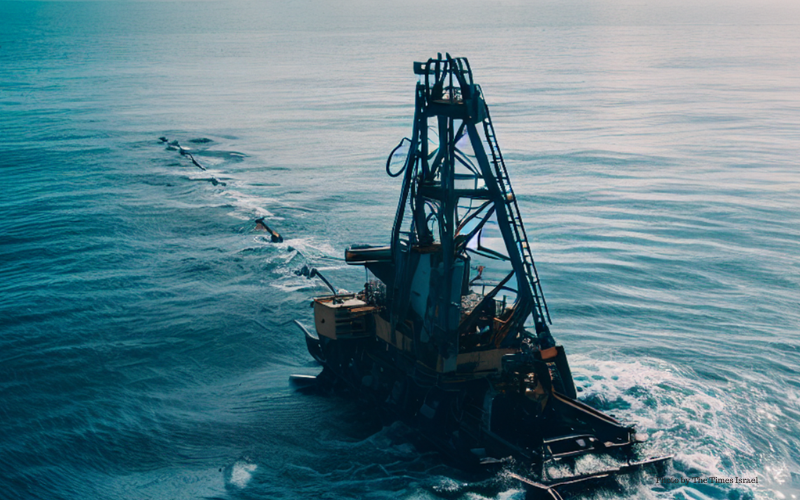State of play
The monumental task of the clean energy transition has touched every corner of the globe, and soon may go even deeper than ever before: the bottom of the ocean. In the race to secure critical minerals needed for a variety of technologies, notably electric vehicle (EV) batteries, some companies have launched exploration missions onto the ocean seabed. Thousands of feet below the surface, a trove of minerals lies untouched, and many want to keep it that way. The battle over the ocean floor came to a head in July of this year, as the International Seabed Authority (ISA), the international organization in charge of deep-sea mining, met to establish a series of rules for mining operations.
The targeted area for mining operations is the Clarion-Clipperton Zone (CCZ), a 6 million square kilometer area in the Pacific, located between Hawaii and Mexico. On the CCZ ocean floor rests mineral-rich nodules containing nickel, copper, cobalt, iron, manganese, and rare earth elements, which are critical inputs into technologies that can reduce greenhouse gas emissions. On one side, opponents of deep-sea mining raise environmental concerns, including the potential to harm biodiversity on the ocean floor. As scientists study this region, more species are being discovered, and many are calling for a moratorium on any mining until the full impact of operations can be better assessed. Proponents, including The Metals Company, a Canadian-based mining company, emphasize the speed required for electrification to stave off the worst effects of the climate crisis, as net-zero pathways require a huge increase in mineral use. In the Sustainable Development Scenario of the International Energy Agency (IEA), nickel demand is set to skyrocket by 2040 for a plethora of clean energy technology, including a 40-fold increase in nickel demand for EVs alone.
This past month, opponents to deep-sea mining won a victory, as the ISA postponed a decision on mining regulations under pressure from activists and sovereign governments, notably Chile, Costa Rica, and France. Although a blow to the mining sector, this battle is far from over. The Metals Company still intends to submit an application to begin mining the seabed, in partnership with Nauru, at the next ISA meeting in July 2024.
Difficult Tradeoffs
The fight over the ocean floor poses larger questions about how to tackle the transition from fossil fuels to renewable energy sources. How can we balance biodiversity loss and localized environmental damage with the race to cut greenhouse gas (GHG) emissions and the broader consequences rampant climate change is having? The climate crisis poses an existential threat to humanity, as more frequent and intense extreme weather events are already disrupting lives and livelihoods around the world, while higher sea levels and extreme heat will make wide swathes of currently inhabited land unlivable. The race to curb the climate crisis has already fallen behind, with the World Meteorological Organization predicting a 66% chance that we will cross the 1.5°C threshold by 2027.
Biodiversity loss and climate change are inextricably linked and feed into each other in a vicious cycle. Diverse ecosystems, like wetlands, forests, and mangroves, act as carbon sinks, serving as guardrails to reduce the quantity of GHGs that get trapped in the atmosphere. The destruction of these ecosystems makes each ton of CO2 emissions that much more perilous to the survival of humanity. Conversely, a warming climate already threatens biodiversity, even beyond the direct human activity that harms it. The UN estimates that if warming increases to an average of 2°C over pre-industrial levels, global coral reefs will diminish by 99%. Both climate change and biodiversity must be central pillars of global action, but time is running out.
Deep-sea mining will damage biodiversity on the seabed, although the exact degree is a matter of debate. However, existing onshore mining practices are already having harsh local environmental impacts, and this should be considered in the debate about deep-sea mining. Indonesia is the world’s largest producer of nickel, but its practices have led to water pollution, rainforest loss, and harm to local indigenous communities, in addition to GHG emissions from the coal required to mine and process nickel. With these impacts and the projected surge in nickel demand, other sources must be developed. Perhaps the biodiversity impacts of deep-sea mining are too great to ignore, and caution is warranted, but the quantity of minerals required will only continue to grow and options are limited. As with most minerals, nickel is geographically concentrated, with over 50% of all reserves found in Indonesia, Australia, Russia, South Africa, and Canada. Estimates place the quantity of deep-sea nickel reserves at 300 million tons, which would almost double the known global reserves. In the face of limitations for sustainable growth for onshore nickel production, the deep sea could offer a path forward.
The Big Picture
Examples abound across the energy transition of tradeoffs, where climate goals must be weighed against biodiversity loss, impacts on indigenous communities, and localized pollution. Whether it is transmission lines that would connect renewable energy projects to population centers or offshore wind projects that coastal communities oppose, energy transition-related projects will continue to face criticism and backlash, much of it valid. Two things are for certain: We need massive changes to the way we get our energy, and that will have negative local impacts. Projects should be carried out thoughtfully, with measures taken to minimize the environmental and social costs of projects. Furthermore, clean technology alone will not solve the climate crisis, and societies must also find ways to live more sustainably and use less energy. However, if every climate-focused project turns into a battle, the delays will prevent us from tackling the greatest problem of our era.



